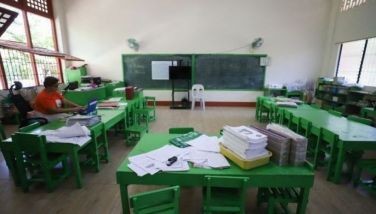RP 105th from human development index
MANILA, Philippines - The Philippines ranked 105th out of 182 countries in the human development index (HDI) that shows the country’s development and growth rate compared with those of other nations.
The wide difference is seen in the 2009 Human Development Index (HDI) released yesterday as part of the 2009 Human Development Report (HDR).
The HDR, an independent report commissioned and published annually by the United Nations Development Program (UNDP), shows a nation’s development compared with those of other countries in their rankings.
This year’s report titled “Overcoming barriers: Human mobility and development” tackles pressing global challenges, translated into more than a dozen languages and launched in many countries around the world.
Among more than 170 countries and territories, the Philippines’ ranking has been going down in the last 10 years. In 1997 and 1998, the Philippines ranked 77, but this dropped to 83-85 in 2000-2004, and to 102 in 2006.
Aside from the Philippines, countries under the Medium Human Development are Jamaica, Paraguay, Sri Lanka, Gabon, Algeria, El Salvador, Syrian Arab Republic, China, Thailand and Tonga.
Each year since 1990, the Human Development Report has published the human development index which looks beyond GDP to a broader definition of well-being. The HDI provides a composite measure of three dimensions of human development: living a long and healthy life (measured by life expectancy), being educated (measured by adult literacy and gross enrolment in education) and having a decent standard of living (measured by purchasing power parity, PPP, income).
Between 1980 and 2007, Philippines’ HDI rose by 0.53 percent annually from 0.652 to 0.751 today.
HDI scores in all regions have increased progressively over the years although all have experienced periods of slower growth or even reversals.
This year’s HDI, which refers to 2007, highlights the very large gaps in well-being and life chances that continue to divide the increasingly interconnected world.
The HDI for Philippines is 0.751, which gives the country a rank of 105th out of 182 countries.
The HDI measures the average progress of a country in human development. The Human Poverty Index (HPI-1), focuses on the proportion of people below certain threshold levels in each of the dimensions of the human development index – living a long and healthy life, having access to education, and a decent standard of living. By looking beyond income deprivation, the HPI-1 represents a multi-dimensional alternative to the $1.25 a day poverty measure.
The HPI-1 value of 12.4 percent for the Philippines, ranks 54th among 135 countries for which the index has been calculated.
The HPI-1 measures severe deprivation in health by the proportion of people who are not expected to survive to age 40. Education is measured by the adult illiteracy rate. A decent standard of living is measured by the unweighted average of people not using an improved water source and the proportion of children under age 5 who are underweight.
RP has emigration rate of 4 percent
Every year, millions of people cross national or international borders seeking better living standards. Most of the world’s 195 million international migrants have moved from one developing country to another or between developed countries.
The Philippines has an emigration rate of 4.0 percent.
The major continent of destination for migrants from Philippines is North America with 49.9 percent of emigrants living there.
In the Philippines, there are 374.8 thousand migrants which represent 0.4 percent of the total population.
In 2007, $16,291 million in remittances were sent to Philippines. Average remittances per person were US$185, compared with the average for the Organization for Economic Cooperation and Development (OECD) of US$108.
Remittances, which are usually sent to immediate family members who have stayed behind, are among the most direct benefits from migration; their benefits spread broadly into local economies. They also serve as foreign exchange earnings for the origin countries of migrants.
However, remittances are unequally distributed. Of the total $370 billion remitted in 2007, more than half went to countries in the medium human development category against less than one percent to low human development countries.
In the 2009 HDI, the top three ranked countries are, in order, Norway, Australia and Iceland. France rejoined the top 10 countries after dropping down for one year, while Luxembourg fell from the top 10.
Five countries rose three or more places, compared with 2006: China, Colombia, France, Peru and Venezuela. These were largely driven by increases in incomes and life expectancy and, in the cases of China, Colombia and Venezuela, were also due to improvements in education.
- Latest
- Trending






























